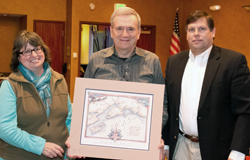Welcome to the newly redesigned home on the web for the Prince William Sound Regional Citizens’ Advisory Council. This new site is designed to help us keep you better informed about our work.
The site has a number of new features that you may find helpful:
- You can now subscribe to news and announcements by email or RSS feed. To subscribe by email, enter your email address at the bottom of any page on the site. An RSS feed link is located in the sidebar of each page. We post new items several times per week.
- You can search for individual reports and documents by using the “Search reports and documents” feature in the Resources section of this site.
- The most popular pages are now highlighted in the sidebar of each page.
- A list of upcoming meetings now appears in the sidebar on each page.
- You can now subscribe to new Requests for Proposals by email or RSS feed. To subscribe by email, visit the Requests for Proposals page in the “Our Work” section of this site. An RSS feed link is located in the sidebar.
The new site will also allow us more easily manage the more than 3000 (and growing!) documents accessible on this website.
Thank you and we hope you find the new site and features helpful.
